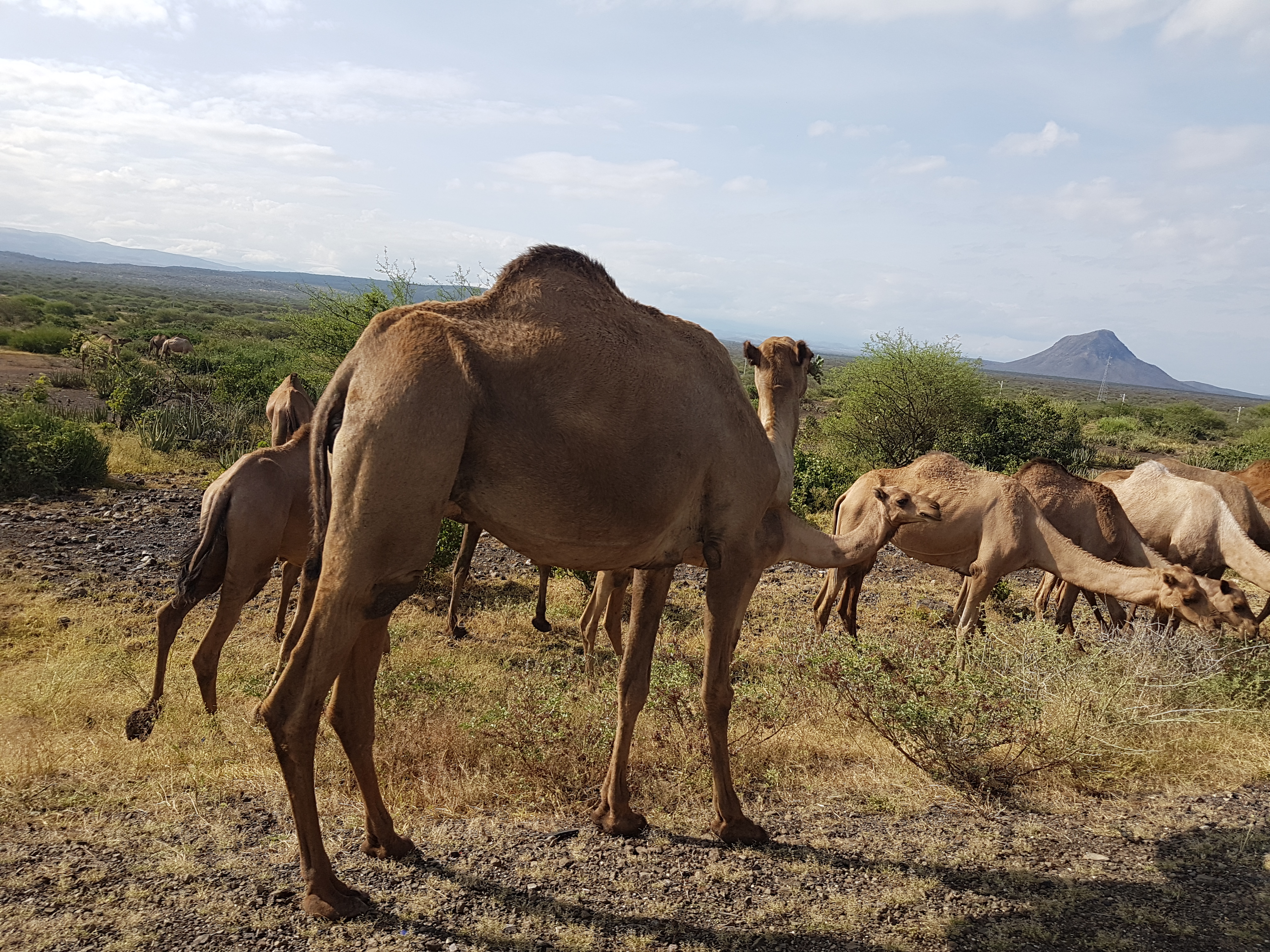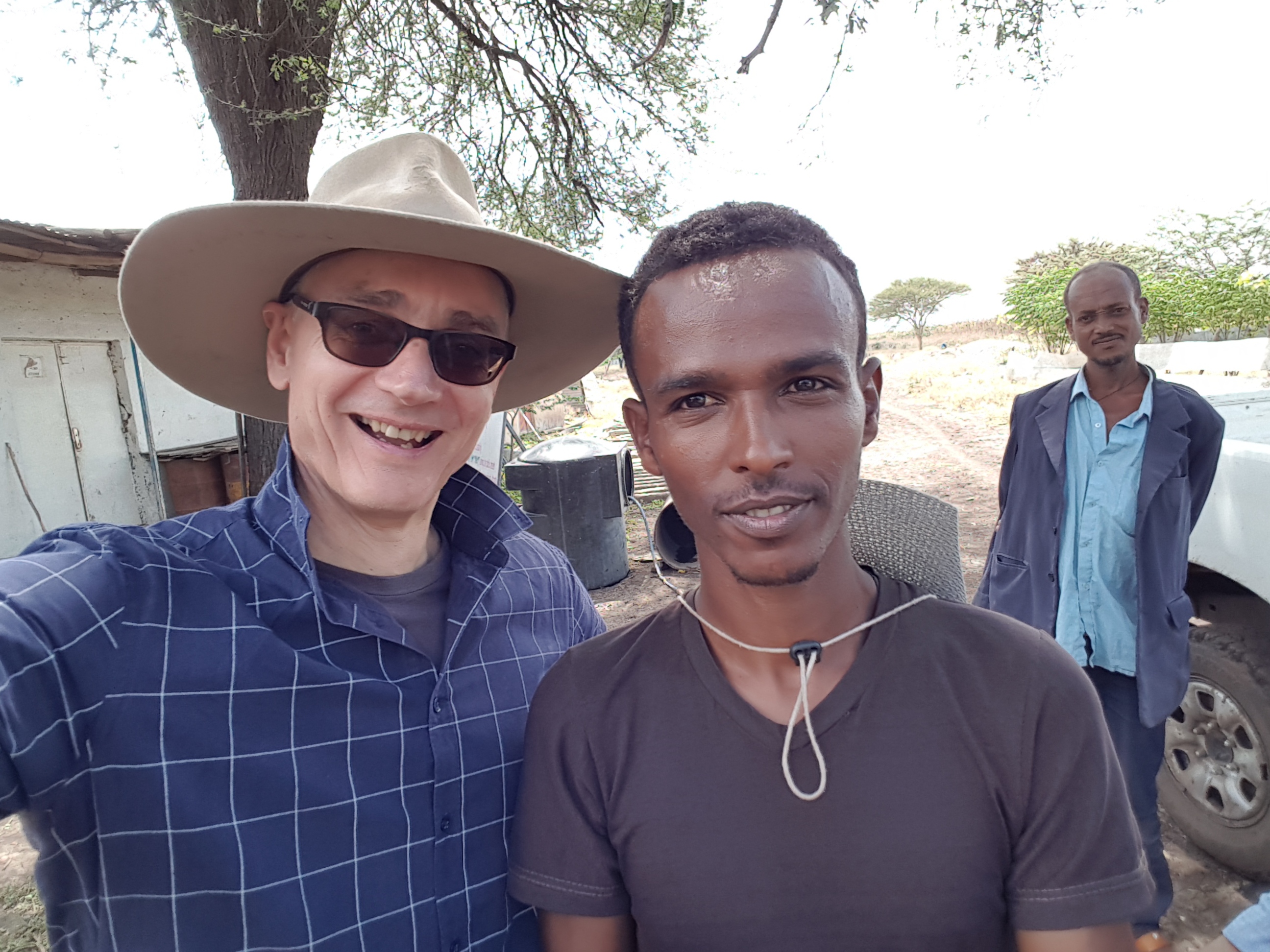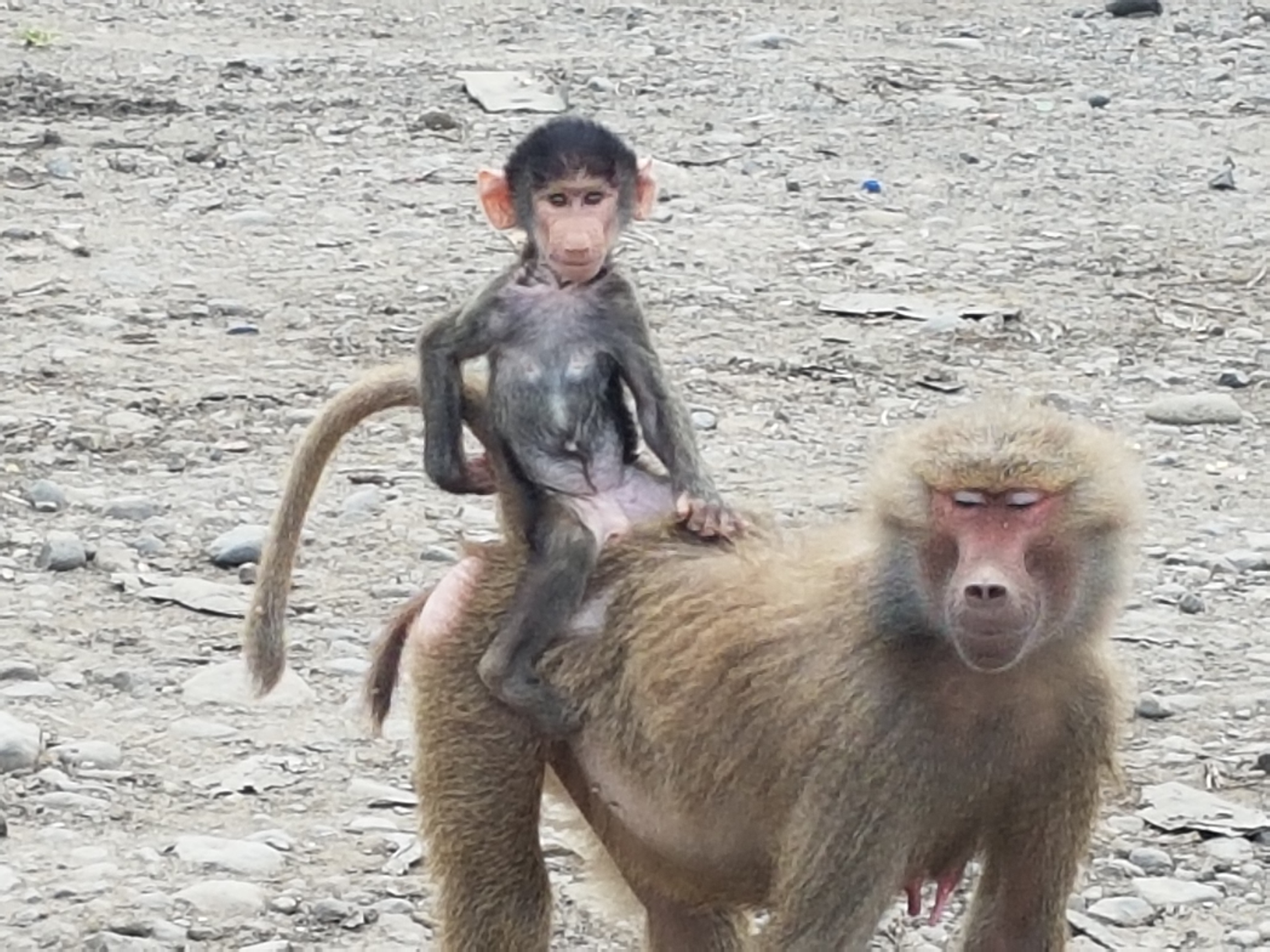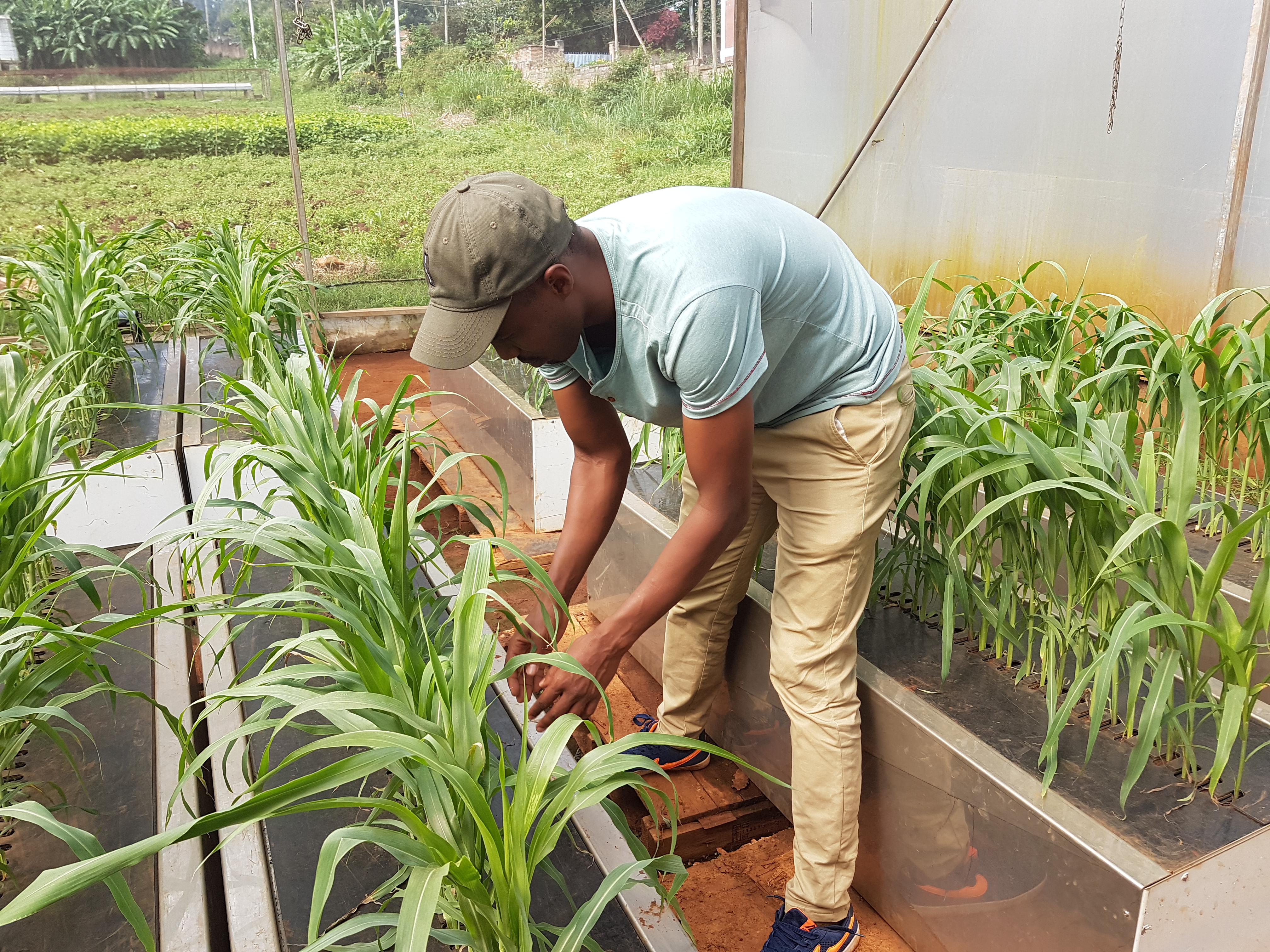Professor Andrew Borrell is a crop physiologist and Professor in Crop Science with the Queensland Alliance for Agriculture and Food Innovation (QAAFI) at The University of Queensland, and Centre Leader of the Queensland Government’s Hermitage Research Facility, near Warwick.
Along with other colleagues from Hermitage (Professor David Jordan, Dr Emma Mace and Dr Yongfu Tao), Andrew is involved in a project funded by the Bill & Melinda Gates Foundation to better understand how changes in root architecture might increase sorghum grain yield under drought conditions in Ethiopia and Australia.
Read Andrew’s story about his recent trip to view field experiments in Ethiopia as part of a project supported by the Bill & Melinda Gates Foundation.
We left Adama before 6am and headed into Ethiopia’s Rift Valley in the early morning light. Despite the early hour, people were everywhere, with auto-rickshaws buzzing in the streets. The city soon gave way to the open highway, dominated by trucks of all shapes and sizes transporting goods between Ethiopia and Djibouti. The rear tyre of the truck in front of us exploded loudly, sending rubber and dust into the air, before the truck unsteadily moved off the road. Camels loped across the landscape in trains of 10s or sometimes 100s, often blocking the highway. Their ribs stuck out, indicating tough times.

My travelling companions were Kassahun, a professor at Jimma University, and Temesgen, a PhD student supervised jointly by Kassahun and myself. Our driver was Girma. Our mission was to visit a field experiment near Mieso, about 280 km east of Addis Ababa. The field trial, funded by the Bill and Melinda Gates Foundation PEARL Program, is testing the association between root architecture and grain yield in sorghum. Our hypothesis is that sorghum plants with narrow roots should be able to extract water from deeper in the soil, resulting in higher grain yield under drought.
The scenery was spectacular. We dropped down into the Rift Valley, surrounded by rugged mountain ranges with jagged outlines. In places it was more like a moonscape, barren and bare. Kassahun explained that it hadn’t rained much in this region lately. We stopped for a coffee break at a roadside stall. A small urn containing incense was burning next to a pot with coffee brewing in the traditional way. Ethiopian coffee is strong, bitter and packs a punch!
As we approached Mieso, sorghum crops filled the landscape to the horizon. We pulled off the road to walk through a local farmer’s crop. The farmer, a young man carrying a machete and chewing on a sweet sorghum stem, was growing a local Ethiopian variety. The sorghum plants were very tall with a single large red panicle ready to harvest. A few green leaves stood out at the top of the canopy, with more than a dozen dead leaves below. Nearby, women were filling bags with charcoal made from Acacia trees, and selling them from roadside stalls.

We drove through the township of Mieso, then turned right onto a dirt road leading to the research station. Surprisingly, a recent shower had turned the track into a quagmire, so Girma used 4WD to slip and slide his way along. We were met by Gezahegn, an MSc student from Jimma University who is working with us on this project. Temesgen led the way through the fields to our experiment. What struck me immediately was the incredible genetic diversity in this field trial. About 940 sorghum genotypes, varying in height, maturity, root architecture and race, formed a spectacular display before us.
Gezahegn showed me the data he’d been collecting, including the measurement of leaf angle using a Samsung tablet and software developed by scientists at The University of Queensland. We spent a lot of time discussing how to harvest the experiment, making sure we could estimate the soil volume available to particular tagged plants, thereby enabling us to make the connection between root architecture and grain yield.

We left the research station and headed back into Mieso for a lunch of injera with lentils and beans. Injera, the national food in Ethiopia, is a sourdough-risen flatbread with a slightly spongy texture, made from tef and/or sorghum flour. It’s an acquired taste for Aussies!
Somewhere between Mieso and the Awash National Park, the thunderclouds built and the sky darkened. Then big drops of rain hit the barren ground, creating that amazing scent when moisture lands on dry earth. Trucks and buses appeared out of nowhere as the rain pelted down faster than the windscreen wipers could keep up. And then the storm disappeared as fast as it came. A herd of white long-horned cattle crossed the road against the clearing sky, searching for better pickings on the other side. As we drove through Awash National Park, monkeys scampered across the road. One scene caught my eye in particular – a baby monkey sitting up tall and straight on the back of its mother, like a cowboy riding a bull at a rodeo. Kassahun couldn’t stop laughing!
This field experiment is linked to another experiment that Temesgen has just completed as part of his PhD. Since Ethiopia is the centre of origin for sorghum, there is a vast amount of diversity to be genotyped and phenotyped. Temesgen sub-sampled almost 2000 lines from a collection of 10,000 lines stored at the Institute of Biodiversity Conservation of Ethiopia. We installed a root phenotyping platform at Jimma University, based on a platform developed at UQ by Dr Vijaya Singh. Using this platform, Temesgen measured the root angle of 1780 sorghum genotypes, sampling the range of diversity in Ethiopia. These lines have also been genotyped and, with the help of Drs David Jordan, Emma Mace and Yongfu Tao from UQ, association mapping studies will be undertaken to identify genes controlling various root architectural traits.

These experiments in Ethiopia should also have relevance to grain-growers in Australia. In the past few years, QAAFI researchers have documented the extent of genetic variation in root angle for a range of cereal crops, including sorghum, wheat and barley. The critical thing now is to demonstrate how root angle impacts grain yield, particularly under drought. Results from experiments in Ethiopia will help to answer that question – and therefore assist the application of this understanding to Australian farmers.
Contact: Professor Andrew Borrell, Professorial Research Fellow, QAAFI Centre for Crop Science, The University of Queensland, T. +61 (0) 7 4542 6740 E. a.borrell@uq.edu.au
The Queensland Alliance for Agriculture and Food Innovation (QAAFI) is a research institute of the University of Queensland (UQ), supported by the Queensland Government.

